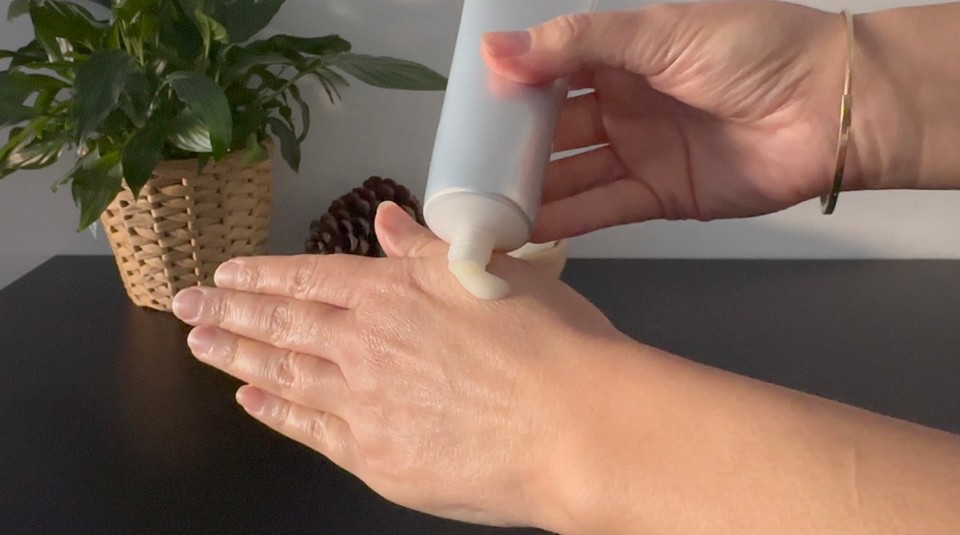Body Cream For Stretch Marks
| Phase | Ingredient | Percent (%) | Weight (g) |
|---|---|---|---|
| Phase A | Distilled water | 50.0 | 50 |
| Glycerin | 8.0 | 8 | |
| Xanthan gum | 0.3 | 0.3 | |
| Phase B | Shea butter | 4.0 | 4 |
| Cocoa butter | 4.0 | 4 | |
| Sunflower oil or Olive oil | 6.0 | 6 | |
| Argan oil | 4.0 | 4 | |
| Jojoba oil | 2.0 | 2 | |
| Cetearyl Alcohol | 3.0 | 3 | |
| Glyceryl Stearate | 5.0 | 5 | |
| Lecithin | 3.0 | 3 | |
| Phase C | Pentylene Glycol | 2.0 | 2 |
| Centella Asiatica | 2.3 | 2.3 | |
| Grape Seed extract | 2.0 | 2 | |
| Betaine | 2.0 | 2 | |
| Citric acid | 1.0 | 1 | |
| Lavender essential oil | 0.6 | 0.6 | |
| Cosgard (INCI - Benzyl Alcohol, Dehydroacetic Acid, Aqua) | 0.8 | 0.8 |
You can help support my website and channel through the “buy me a coffee” page.
Here is the link: https://www.buymeacoffee.com/diycosmetica
Your support helps me keep sharing here more information and more formulas.
Stretch mark creams help improve the appearance of stretch marks by moisturizing and nourishing the skin. These creams usually contain ingredients like vitamins, peptides, or collagen that aim to boost the skin's elasticity, hydrate deeply, and promote cell regeneration. While they don't completely remove stretch marks, consistent use can help fade their appearance, making the skin smoother and the marks less noticeable over time. Moisturized skin is more supple, which can prevent future stretch marks as well.
In this post, I want to go over the most common ingredients used in stretch marks creams and explain a bit about the formula I made to create a stretch marks cream and give alternatives to the ingredients I used in this formula.
If you want to learn the basics of making an emulsion, read the post on how to make basic cream/lotion. You also have a formula for cellulite cream treatment.
So, what are stretch marks, and why do we have them?
Stretch marks are commonly caused by situations where the skin is stretched too quickly. This happens during pregnancy, as the skin expands to make room for a growing baby, and during body size changes, like gaining or losing weight, which forces the skin to stretch. They are also common during puberty when rapid growth occurs, or when muscles grow quickly, such as in bodybuilders. These quick changes can weaken the skin’s elastic fibers, causing the inner layer of skin (dermis) to tear, leading to visible scars known as stretch marks.
Hormonal changes, particularly higher levels of cortisol (a hormone produced during stress or pregnancy), can make stretch marks worse. Cortisol breaks down the collagen and elastin in the skin, which are the fibers that keep the skin stretchy and resilient. When these fibers weaken, the skin is more likely to tear, resulting in stretch marks that often start out as red or purple lines but eventually fade to white or silver.
To reduce the risk and severity of stretch marks, especially during high-risk times like pregnancy or rapid body changes, it’s important to keep the skin well-hydrated and elastic. Stretch mark creams are designed to do this by deeply moisturizing the skin, boosting collagen production, and soothing any inflammation, which helps the skin stretch without tearing.
What Makes Stretch Marks Better or Worse?
- Better: Proper skin hydration, elasticity improvement, and collagen-boosting treatments can help reduce the appearance of stretch marks. Products that improve moisture retention and stimulate skin regeneration can help heal and fade stretch marks over time.
- Worse: Stretch marks can become worse with additional skin stretching, poor hydration, or lack of proper skincare. Factors such as genetic predisposition, hormonal imbalances, or continuous rapid weight gain can also contribute to worsening stretch marks.
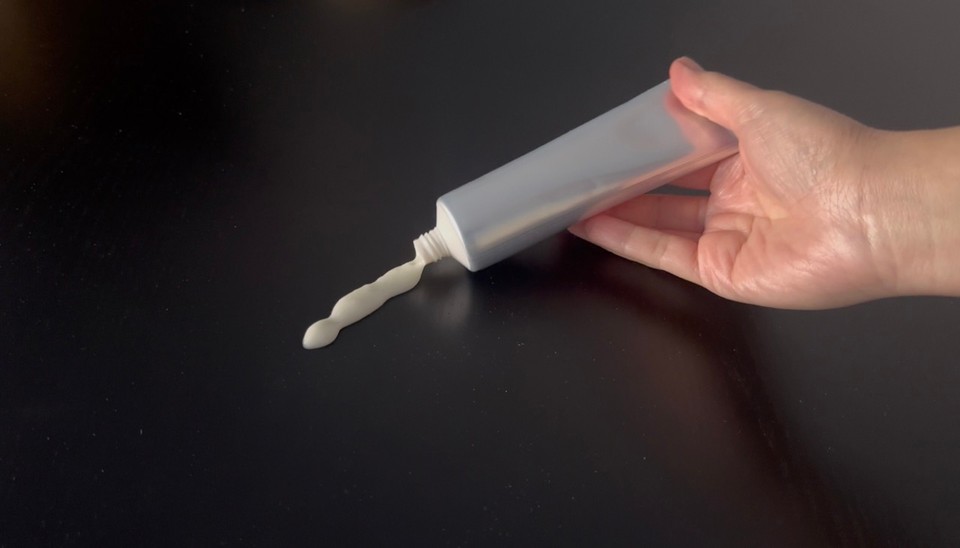
How Stretch Mark Creams Help
Stretch mark creams work by deeply moisturizing the skin, improving its elasticity, and stimulating collagen production. Here’s how the ingredients in common stretch mark creams help:
Active Ingredients you can find in Stretch Mark Creams
- Retinoids (e.g., Retinol, Retinyl Palmitate)
- Function: Retinoids are derivatives of vitamin A that promote collagen production, which helps thicken the skin and reduce the visibility of stretch marks. They are particularly effective for early treatment when the marks are still red or purple.
- **How They Help: By increasing skin cell turnover, retinoids can improve skin texture and fade the color of stretch marks. However, these are not recommended during pregnancy due to potential risks to the fetus.
- Peptides
- Function: Peptides stimulate collagen production and improve skin elasticity.
- How They Help: They enhance the skin’s ability to heal and regenerate, smoothing out the skin and reducing the appearance of stretch marks(
- Silicone
- Function: Silicone-based creams create a protective barrier over the skin, helping retain moisture and promote healing.
- How They Help: Silicone can smooth the skin’s surface and reduce the redness of early-stage stretch marks.
- Centella Asiatica
- Function: Known for its wound-healing properties, this plant extract stimulates collagen production.
- How It Helps: Centella Asiatica strengthens the skin’s barrier and enhances elasticity, making it particularly useful for repairing damaged skin and fading stretch marks.
- Hyaluronic Acid
- Function: Hyaluronic acid is a powerful humectant that attracts moisture to the skin.
- How It Helps: By keeping the skin hydrated and plump, it helps maintain skin elasticity and reduces the appearance of stretch marks over time.
Emollients that are often used in Stretch Mark Creams:
Shea Butter and Cocoa Butter: These are rich in fatty acids and vitamins, helping to deeply moisturize and improve skin texture, making the skin more pliable and less prone to stretch marks.
Jojoba Oil and Sunflower Seed Oil: These oils mimic the skin's natural sebum, providing moisture and acting as skin conditioners, which helps keep the skin soft and resilient.
Argan oil/ Rosehip oil/ Wheat Germ oil: Argan oil, rosehip oil, and wheat germ oil are powerful natural remedies for stretch marks due to their high content of essential fatty acids, vitamins, and antioxidants. These oils work together to deeply hydrate and improve the skin's elasticity, making it more resistant to tearing during periods of rapid stretching, such as pregnancy or weight gain. Argan and rosehip oils promote collagen production, which strengthens the skin and aids in repairing damaged tissue, while wheat germ oil is especially rich in vitamin E, essential for skin regeneration. Together, these oils help soothe inflammation, reduce redness, and fade existing stretch marks by improving skin texture and promoting faster healing. Their potent antioxidant properties also protect the skin from further damage, ensuring long-term skin health and resilience.
More about each oil:
Argan oil is rich in vitamin E, essential fatty acids, and antioxidants, making it an excellent moisturizer that deeply nourishes and improves skin elasticity. By boosting hydration, argan oil helps the skin stretch more efficiently, reducing the risk of tears that lead to stretch marks. Its anti-inflammatory properties also soothe the skin, minimizing redness and irritation associated with stretch marks. Additionally, argan oil stimulates collagen production, aiding in repairing damaged skin and making it a highly effective treatment for reducing the appearance of existing stretch marks.
Rosehip oil is rich in essential fatty acids, vitamins A and C, and antioxidants, contributing to skin cell regeneration and improved texture. The vitamin A content boosts collagen production, strengthening the skin and enhancing its ability to withstand tearing during periods of rapid growth or weight changes. Additionally, rosehip oil supports the fading of scars and stretch marks by accelerating healing and reducing pigmentation, making the skin smoother and more even-toned over time.
Wheat germ oil is rich in vitamin E, essential for skin repair and regeneration. It aids in restoring the skin's elasticity, making it less susceptible to developing stretch marks. Its potent antioxidant properties protect the skin from environmental damage, while the oil's high fatty acid content deeply moisturizes, keeping the skin soft, supple, and more resilient to stretching. This combination of hydration and protection helps prevent tearing during periods of rapid skin expansion, such as pregnancy or weight gain.
Another cosmetic product that can help with stretch marks is an exfoliate bar or exfoliate cream; they remove dead skin cells and encourage the growth of new skin, which can improve the appearance of stretch marks over time.
Check the formula for Solid Cleanser Scrub formula or the Pumice and lactic acid scrub, and also the Brightening Body Scrub.
A combination of exfoliating and hydrating can effectively help reduce the appearance of stretch marks.
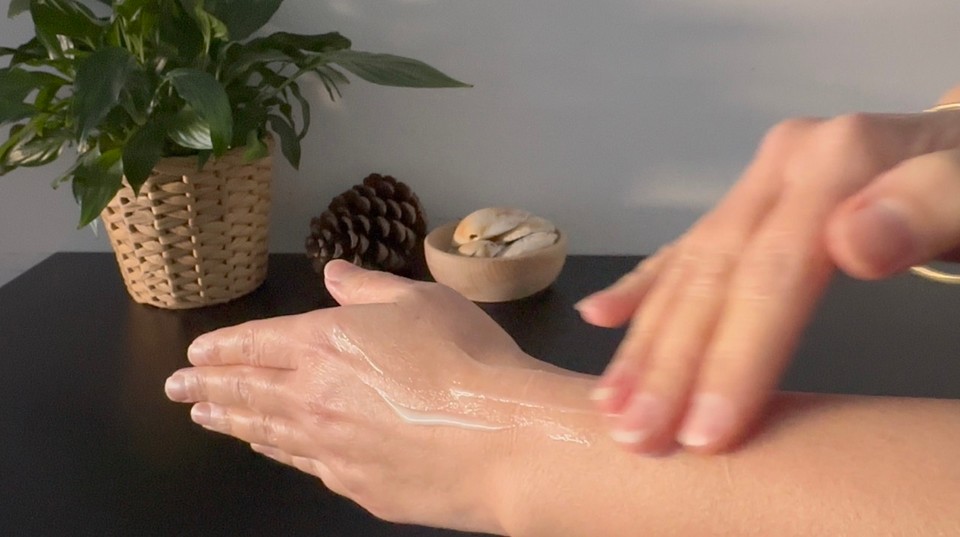
Now that I have given you information on primary ingredients you can often find in many stretch mark creams, let's go over my formula.
The formula I share here has a combination of glycerin, shea butter, cocoa butter, and oils like sunflower, argan, and jojoba, which provide intense hydration and lock in moisture, keeping the skin supple and more resilient to stretching, which helps prevent new stretch marks. Ingredients such as Centella Asiatica, grape seed extract, and argan oil boost collagen production and skin regeneration, improving elasticity and reducing the appearance of existing marks. Additionally, shea butter, cocoa butter, and Centella Asiatica promote healing by supporting cell turnover, while the oils, fatty alcohols, and lecithin strengthen the skin's barrier, protecting it from further damage and promoting overall repair.
I chose not to include Retinol in this formula because it can cause irritation, redness, peeling, and sensitivity, especially for sensitive skin or conditions like eczema. By avoiding Retinol, the formula becomes gentler and more suitable for a wider range of users, including those with sensitive or reactive skin. Retinol is also not recommended during pregnancy or breastfeeding due to potential risks associated with Vitamin A derivatives. Additionally, Retinol increases skin sensitivity to sunlight, which can raise the risk of sunburn or damage if not combined with sunscreen. Excluding Retinol allows this cream to be safely used both day and night. With prolonged use, Retinol can also lead to skin sensitivity and often requires cycling off to avoid adverse effects. Without it, this formula is safe for continuous, long-term use. Instead, the focus remains on natural ingredients like shea butter, cocoa butter, and Centella Asiatica to promote skin healing, hydration, and elasticity.
You can check out the Retinol face cream formula - here.
I also didn't use any silicones in this formula. Silicones, such as dimethicone or cyclopentasiloxane, create a barrier on the skin that can sometimes trap oils, sweat, and impurities underneath. This may lead to clogged pores, irritation, or breakouts, especially for those with sensitive or acne-prone skin. By using natural oils, butters, and plant extracts instead of silicones, this formula can deliver essential nutrients (like fatty acids and vitamins) that promote skin regeneration and long-term healing.
Most people begin to see noticeable improvements in the appearance of stretch marks after 8 to 12 weeks of consistent use of a stretch marks cream.
Information on the ingredients in this formula and alternatives:
Pentylene Glycol is a humectant and solvent with antimicrobial properties, helping the cream maintain its integrity and moisturizing properties. You can replace it with Propanediol or butylene glycol: both can provide similar humectant benefits.
Shea Butter is deeply moisturizing and rich in vitamins A and E. It promotes skin elasticity and healing, helping reduce the appearance of stretch marks. Mango butter offers similar benefits, being highly moisturizing and rich in antioxidants.
Cocoa butter is known for improving skin elasticity, hydrating deeply, and effectively reducing stretch marks. Kokum butter is lightweight but deeply moisturizing and can be used for similar purposes.
Sunflower Oil is rich in vitamin E. It helps maintain the skin's barrier and reduces the appearance of scars and stretch marks. Sweet almond or safflower oil are also rich in vitamin E and can be alternatives for sunflower oil. You can use an infused oil for extra benefits. Here is a post on infusing oils.
Argan Oil is known for its high content of fatty acids and antioxidants. It helps improve skin elasticity and repair damaged skin. Rosehip oil is a great alternative. It's also rich in essential fatty acids and has proven regenerative properties for scars and stretch marks.
Jojoba oil mimics the skin's natural oils, moisturizing deeply without clogging pores. It supports skin elasticity and prevents further stretch mark formation. Squalane (plant-derived) offers lightweight moisture and similar benefits for elasticity and repair.
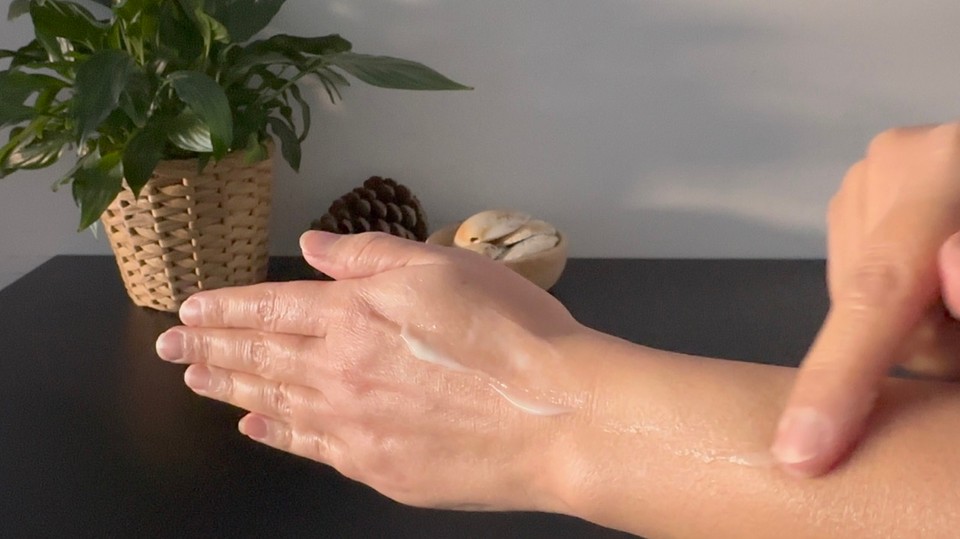
Glyceryl Stearate is the primary emulsifier, it also provides skin conditioning. Other emulsifiers that can be used are Emulsifying wax NF, Olivem 1000 (INCI - Cetearyl Olivate, Sorbitan Olivate), and Montanov 68 (INCI - Cetearyl Alcohol, Cetearyl Glucoside).
Cetearyl Alcohol a fatty alcohol used as a co-emulsifier and thickener to stabilize the cream. It helps the oil and water phases blend smoothly. Cetyl alcohol or Stearyl alcohol are other fatty alcohols you can use instead.
Lecithin is an emulsifier and a skin-conditioning agent that improves hydration and maintains skin barrier function by enhancing the skin's ability to retain moisture. It enhances the penetration of other active ingredients (such as Centella Asiatica or grape seed extract). You can use Polyglyceryl-3 Lecithinate, Cetearyl Olivate or Polyglyceryl-10 Oleate instead.
Centella Asiatica extract, is a herb rich in saponins that stimulates collagen production, making it highly beneficial in stretch marks creams. It promotes collagen synthesis, crucial for maintaining skin elasticity and firmness, thereby helping to reduce the appearance of stretch marks. Additionally, it accelerates wound healing, aiding in the repair of damaged skin and minimizing scars. Centella Asiatica enhances skin healing, regeneration, and overall nourishment with moisturizing properties that keep the skin hydrated and improve texture. Combined with other active ingredients, it effectively addresses inflammation and irritation, making it a valuable ingredient for preventing and treating stretch marks during periods of rapid skin expansion, such as pregnancy, puberty, or weight gain.
Other extracts you can use in this formula:
Green Tea extract, rich in antioxidants, can help improve skin elasticity and reduce inflammation, supporting overall skin health and appearance.
Cucumber extract provides hydration and cooling effects, promoting skin health and elasticity while helping to improve the skin's overall appearance.
Willow Bark extract, rich in salicylic acid, can help exfoliate the skin, promote cell turnover, and reduce stretch marks.
Sea Buckthorn extract is packed with vitamins and fatty acids, and it supports skin healing and elasticity. Pomegranate extract is known for its antioxidant properties. Pomegranate extract can help improve skin elasticity and promote regeneration.
Grape Seed extract, derived from the seeds of Vitis vinifera, is celebrated in skincare for its high content of proanthocyanidins. These powerful antioxidants help neutralize free radicals and reduce oxidative stress, promoting healthier skin. This extract enhances skin elasticity by stimulating collagen and elastin production, resulting in improved texture and resilience that can reduce the appearance of sagging and stretch marks. Additionally, its natural anti-inflammatory properties soothe irritated skin, while its humectant qualities attract moisture, keeping the skin hydrated and less prone to developing stretch marks. Grape seed extract also offers protective effects against UV damage, reducing the risk of sunburn and photoaging, and it promotes wound healing, which can improve the appearance of existing scars. Alternatively, you can use: Rosehip extract is rich in vitamins and essential fatty acids. It helps regenerate skin tissue and improve elasticity, effectively reducing the appearance of scars and stretch marks. Chamomile extract's anti-inflammatory and calming effects are a soothing balm for irritated skin, providing relief and promoting healing.
Betaine is a naturally occurring compound derived from sugar beets and acts as a humectant, attracting moisture to the skin and helping to maintain hydration levels. In stretch mark creams, betaine is beneficial for its ability to improve skin elasticity, enhance moisture retention, and provide a soothing effect on the skin, which can help minimize the appearance of stretch marks during periods of rapid skin expansion. Additionally, betaine supports the skin’s natural barrier function, promoting overall skin health and resilience. Alternatives to betaine can be sodium PCA, Aloe vera extract, or Sorbitol.
I'm using Cosgard (INCI - Benzyl Alcohol, Dehydroacetic Acid, Aqua) as the preservative. If you use another preservative, check the data sheet provided by your supplier to make sure which percentage you need to use. If you need to use 1% of your preservative, reduce 0.2% from the distilled water amount.
I used Lavender essential oil, but you can make this cream unscented. If you want a fragrance-free cream, skip the fragrance oil and add 0.6% to the distilled water. Lavender essential oil is a great addition to stretch mark cream because it helps the skin heal and regenerate, making stretch marks fade over time. It improves skin elasticity, reducing the chances of new stretch marks forming. Lavender also soothes redness and irritation, keeps the skin moisturized, and protects it from further damage. Its calming and antiseptic properties make it gentle on sensitive or inflamed skin, helping to prevent discomfort and support overall skin healing.
If you want to use another essential oil that can also benefit and help with stretch marks, you can use Geranium essential oil, which is excellent for skin tightening and toning. It promotes cell regeneration and enhances the skin’s elasticity, making it beneficial for preventing and reducing stretch marks. It also has anti-inflammatory properties that soothe the skin.
Another option is Neroli essential oil, which boosts skin elasticity and regenerates damaged skin cells. It stimulates cell turnover, which can help reduce the appearance of stretch marks. Additionally, it has a calming, soothing effect on the skin.
The final consistency depends on your emulsifier and the butters/oils. Changing some of the ingredients from the original formula can change the texture/color or consistency of your final product. The best approach is to prepare a small batch and test the final result before making a bigger batch.
I hope this post provided helpful insights into the purpose of stretch mark creams and how they can reduce the appearance of stretch marks on the skin. Now, it's time to make the cream. Use the calculator to adjust the amount you wish to make.
Method:
- Add phase A ingredients to a heat-resistant beaker. Start by making a slurry by combining xanthan gum and glycerin, then add the distilled water and cover with aluminium foil.
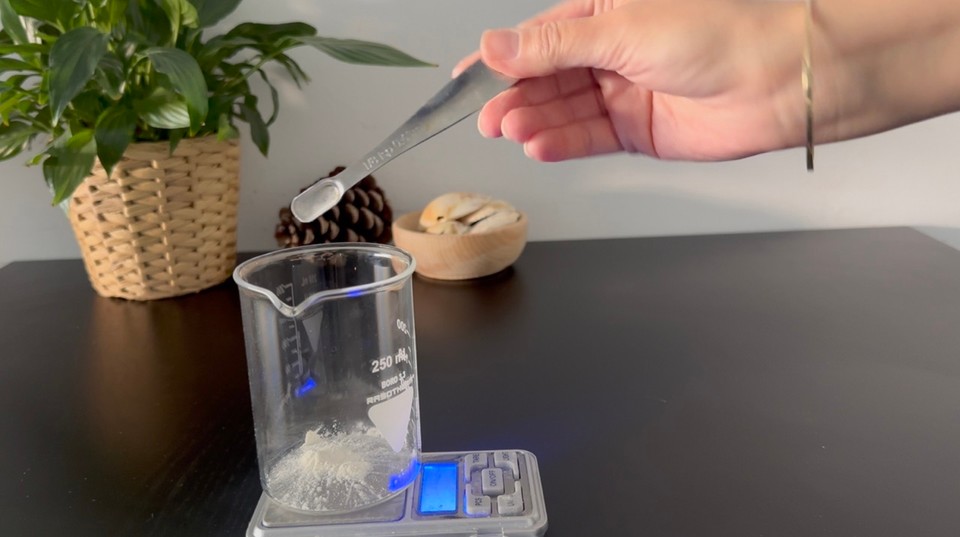
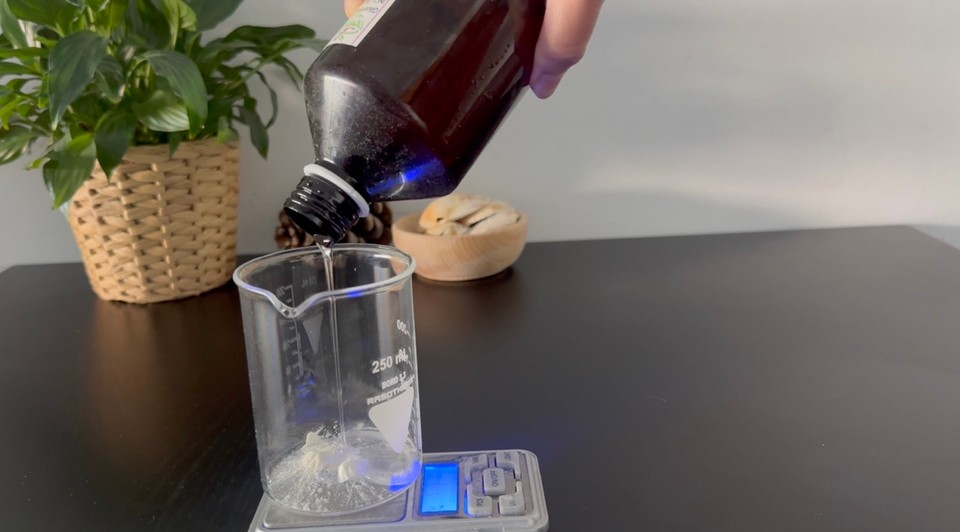
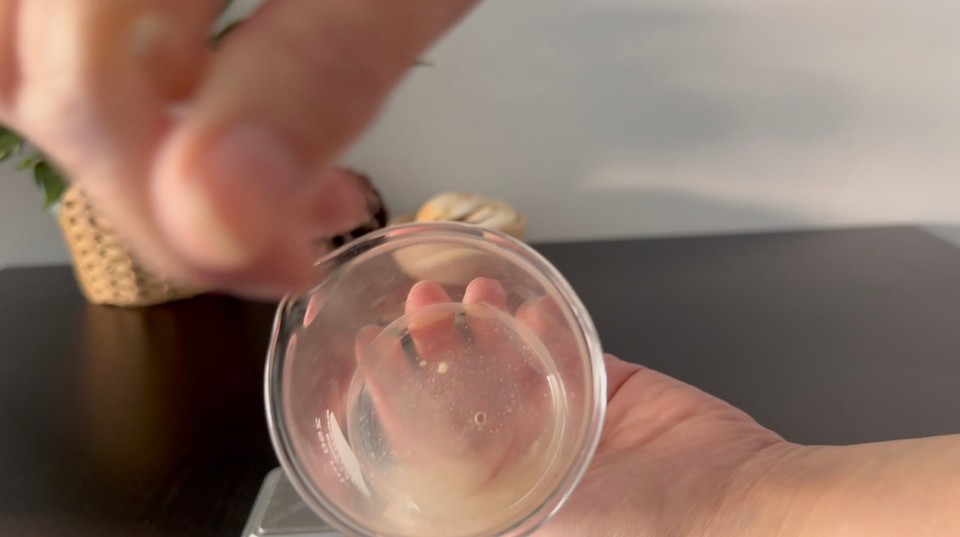
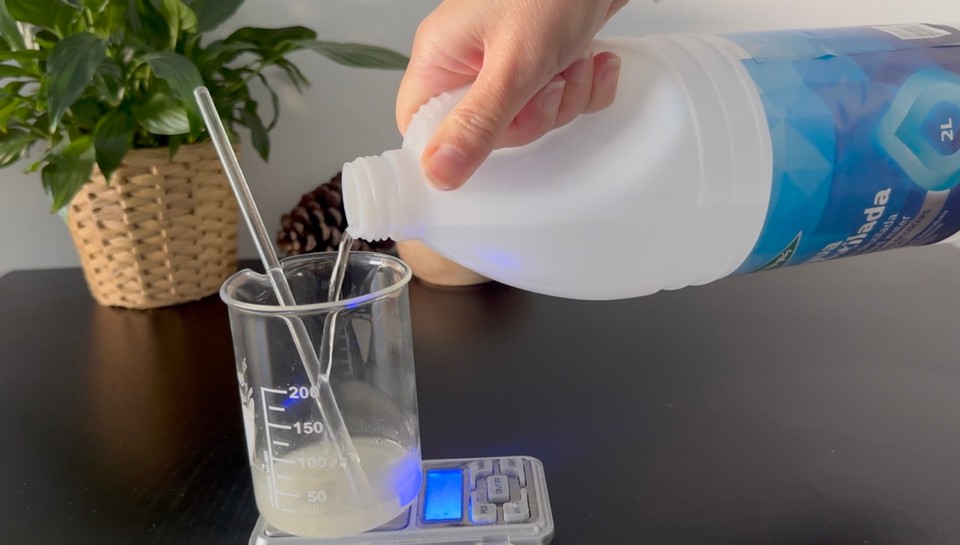
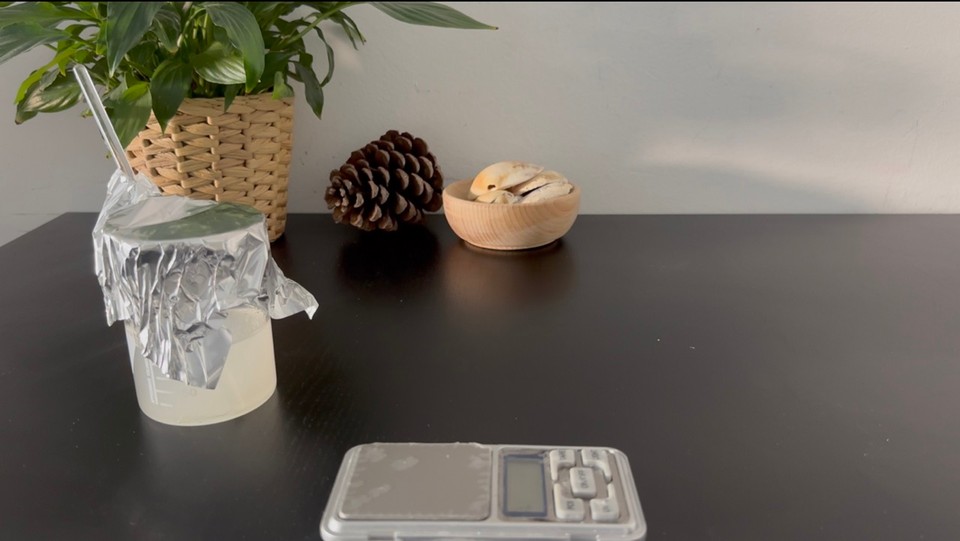
- In another heat resistance beaker, add phase B ingredients.
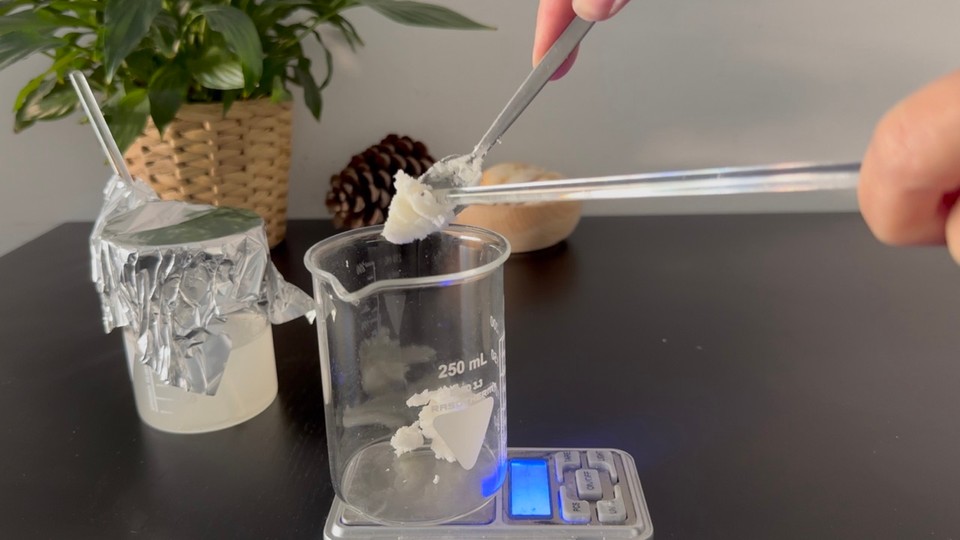
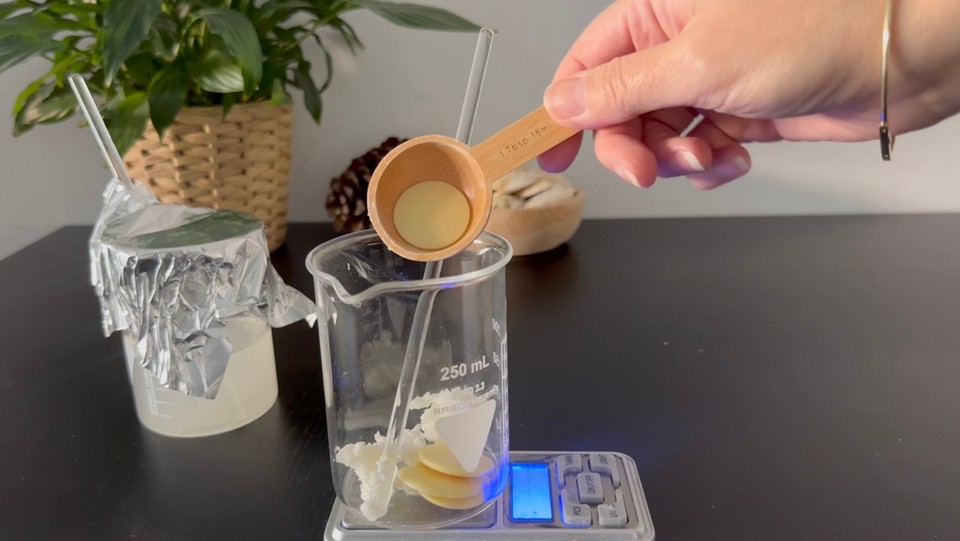
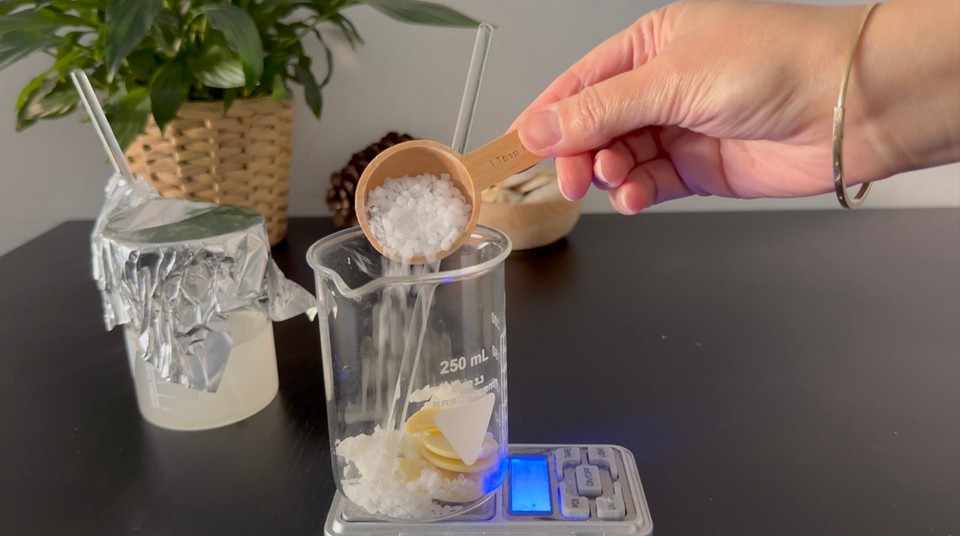
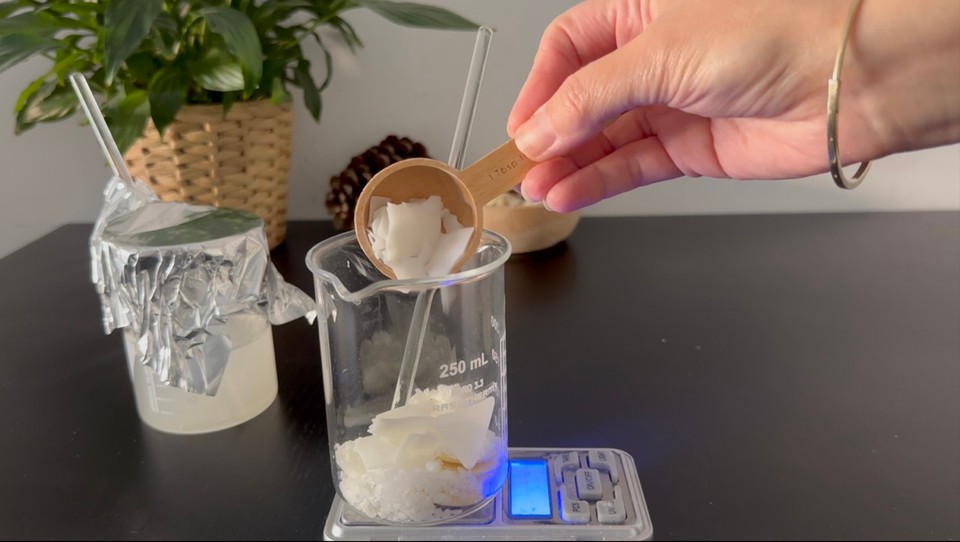
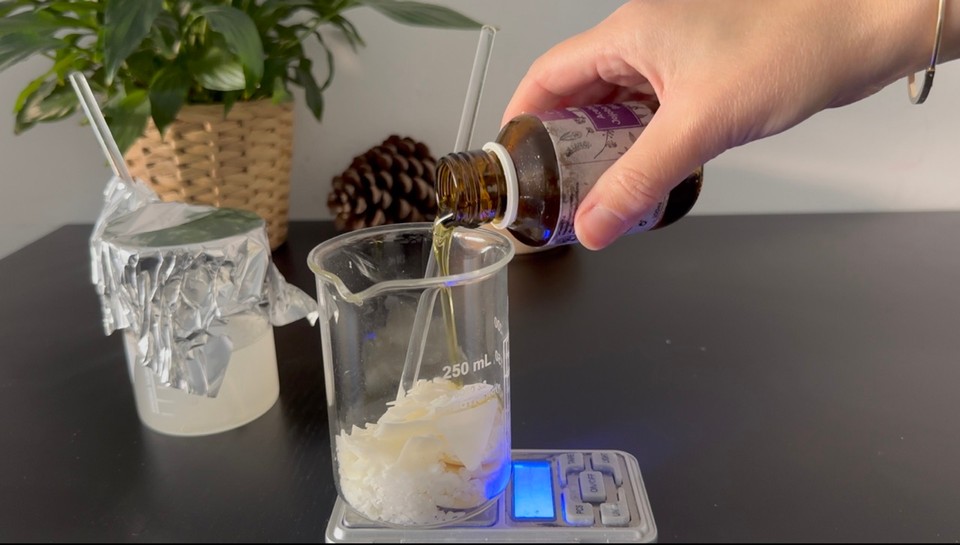
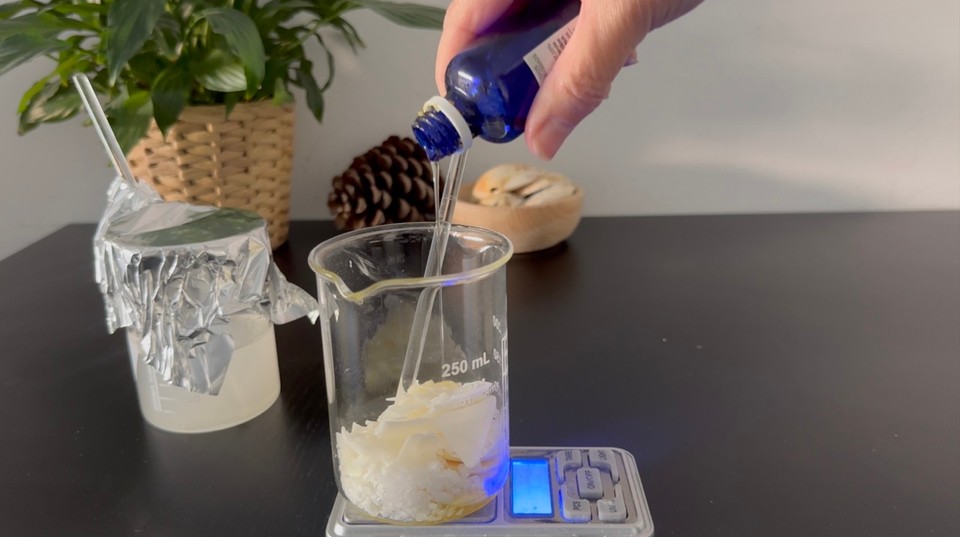
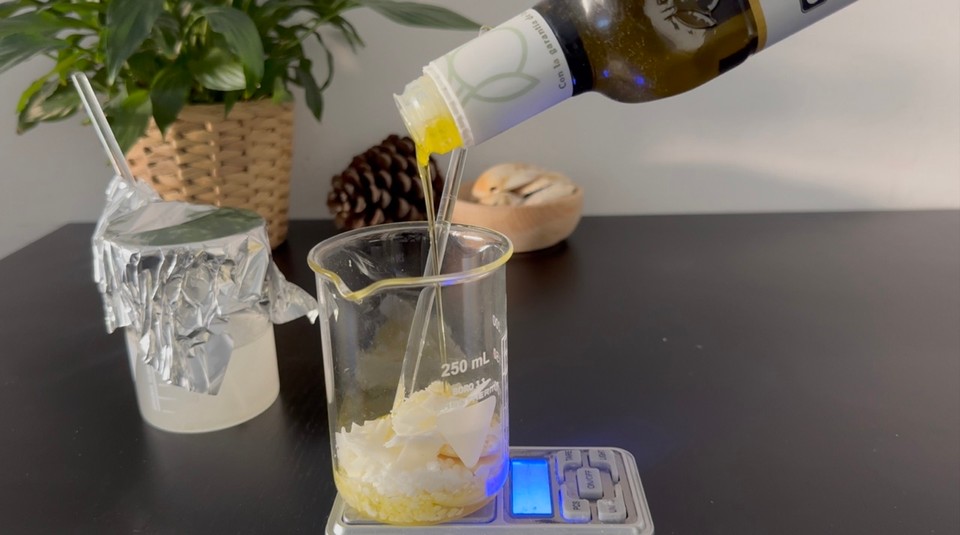
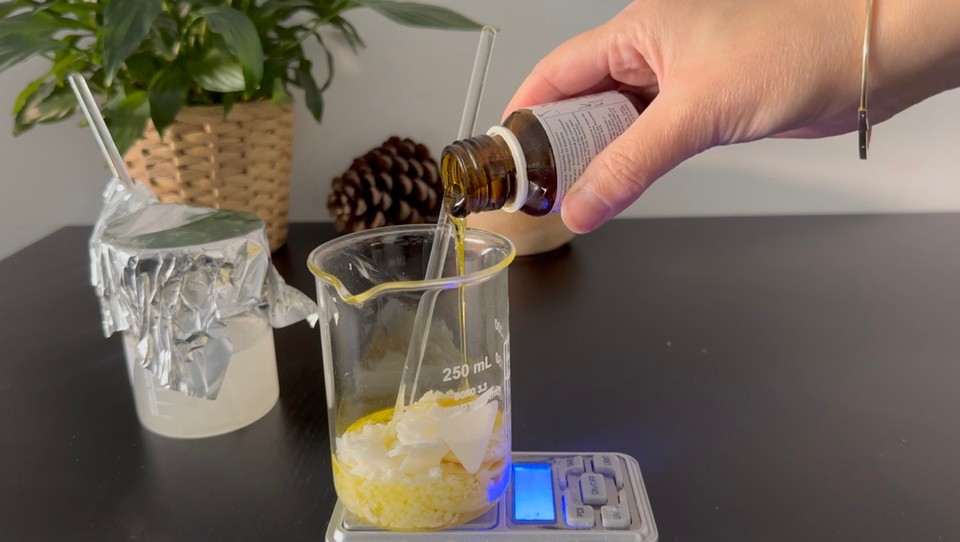
- Place phases A and B into a double boiler on medium heat for 20 minutes.
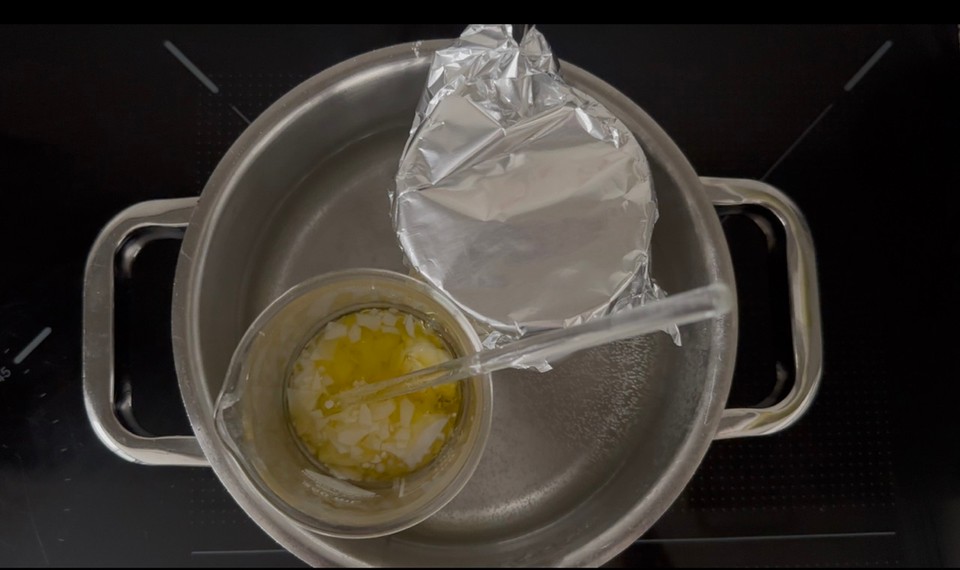
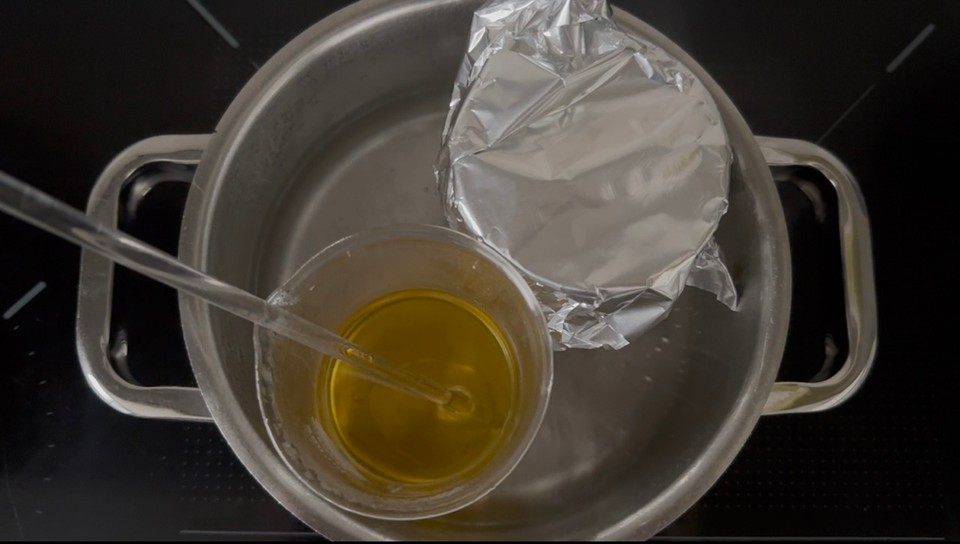
- While phases A and B are heating, prepare phase C. Set aside.
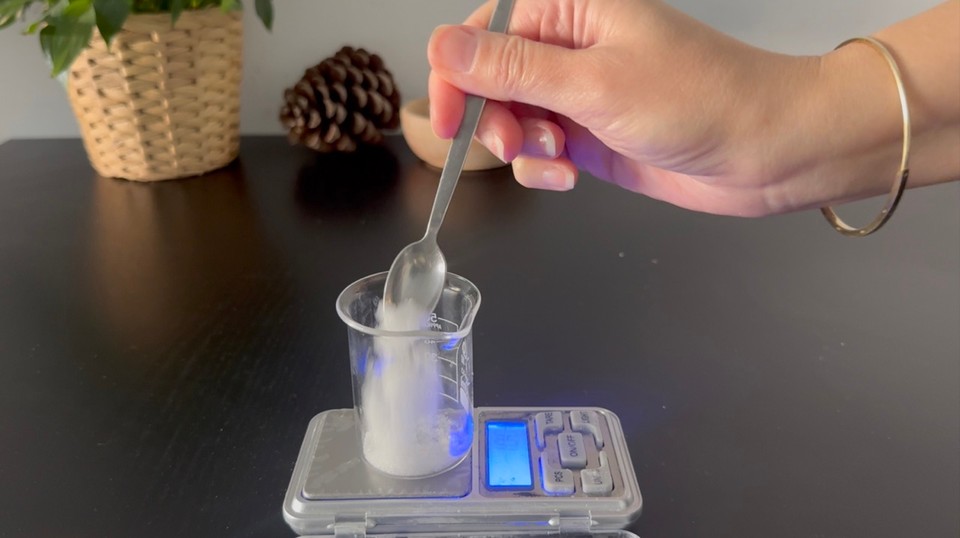
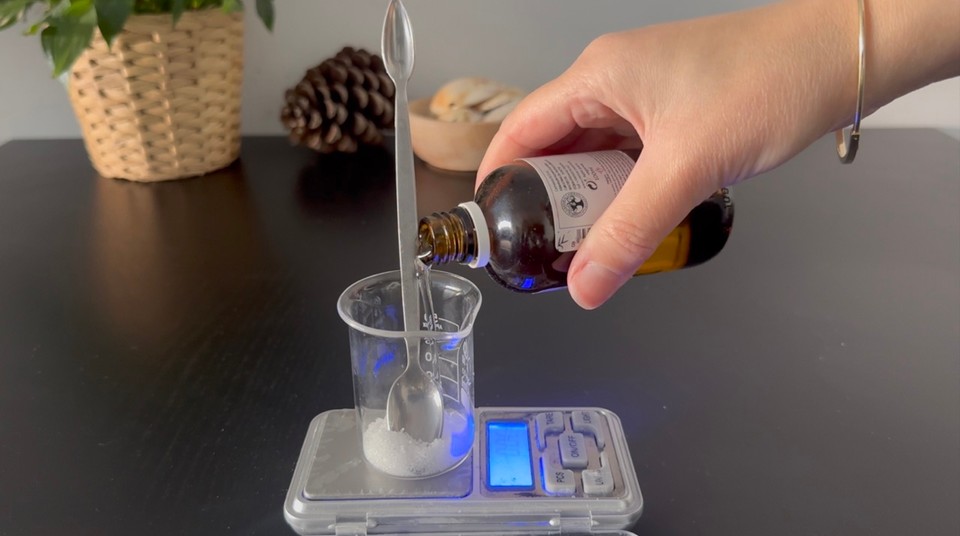
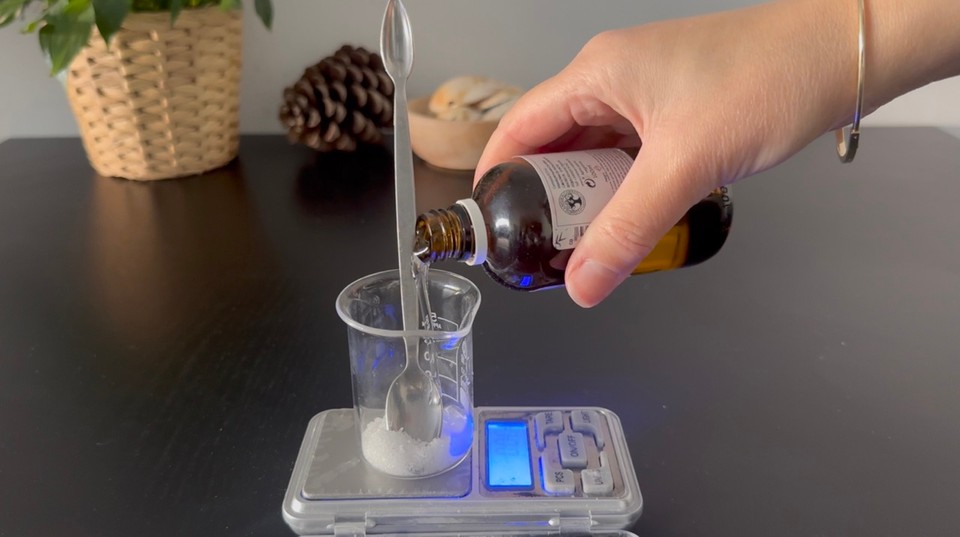
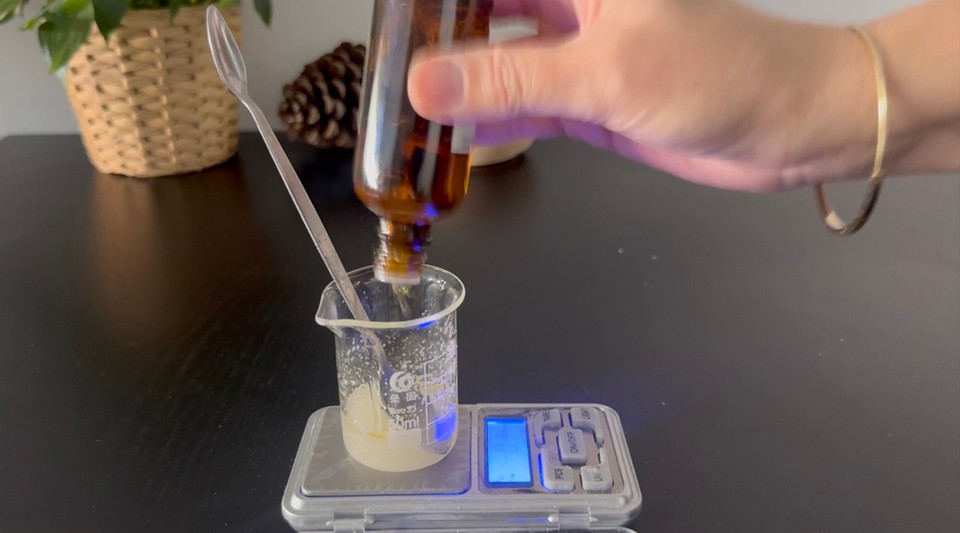
- Remove phases A and B from the heat.
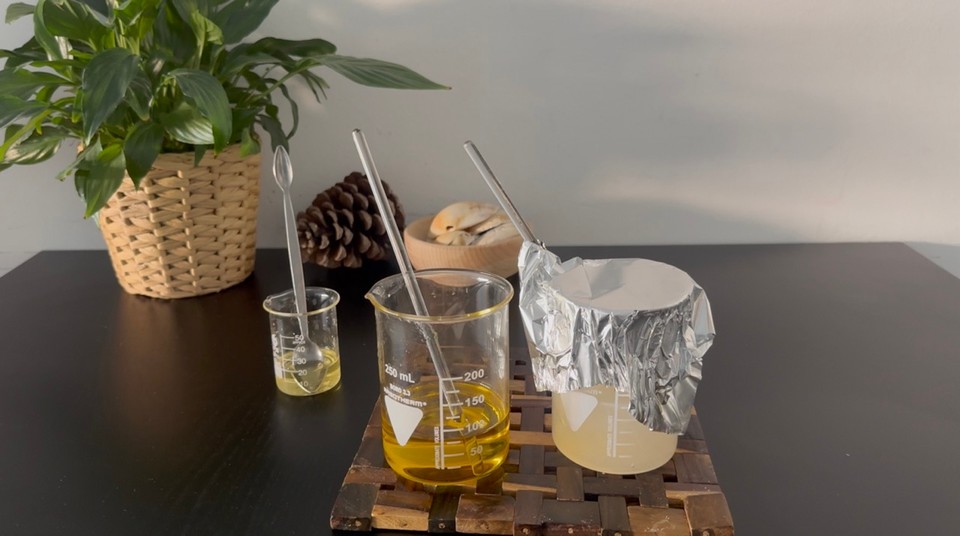
- Combine phases A and B. Use an immersion blender or homogenizer to create an emulsion.
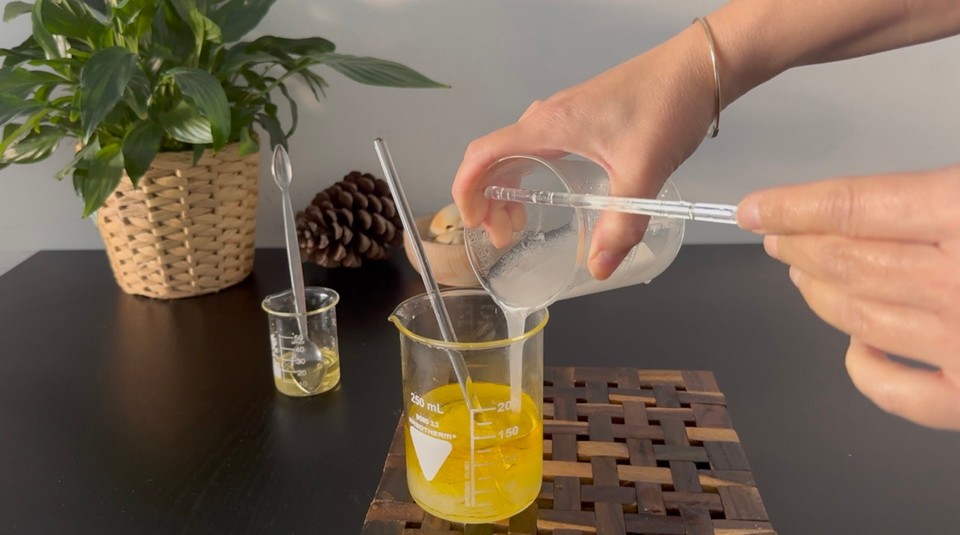
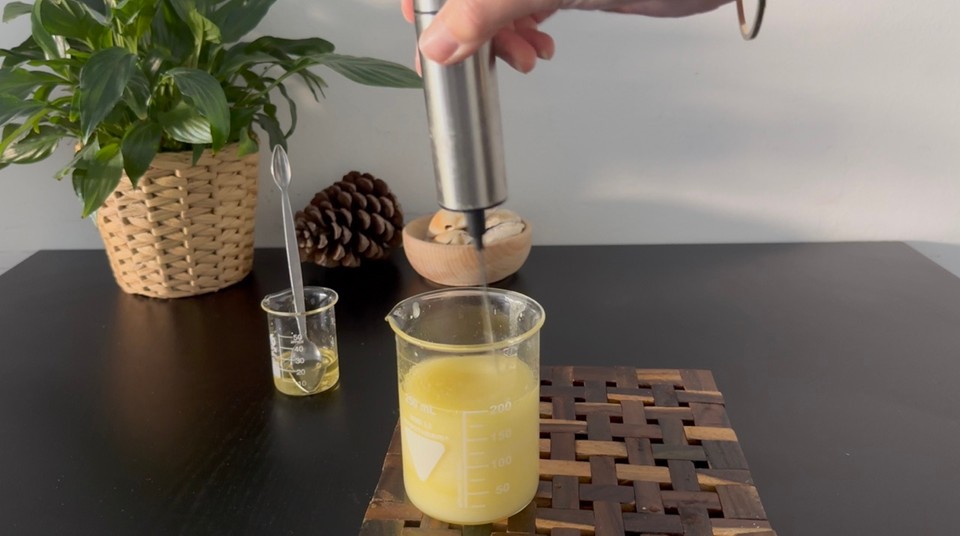
- Let the emulsion cool down to 40 degrees celsius or less.
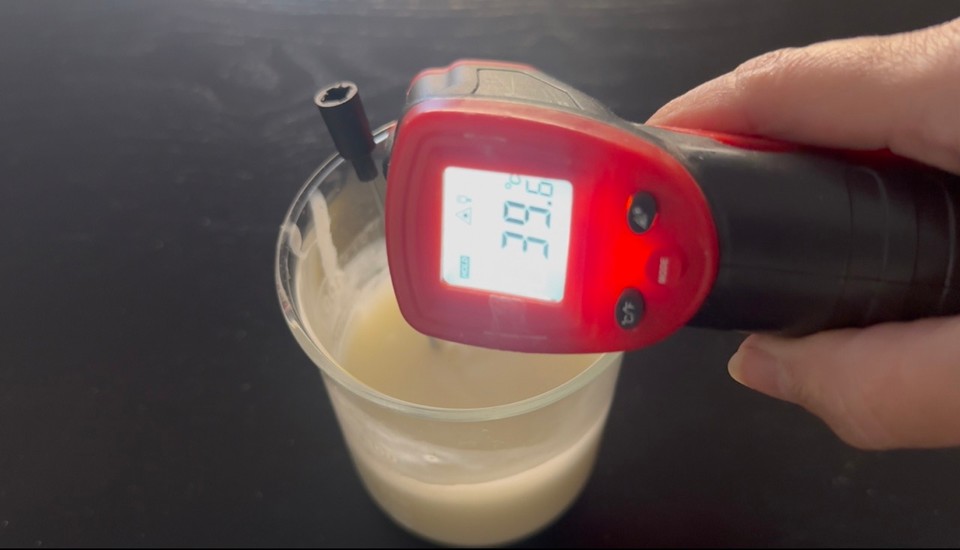
- Add phase C and mix to combine.
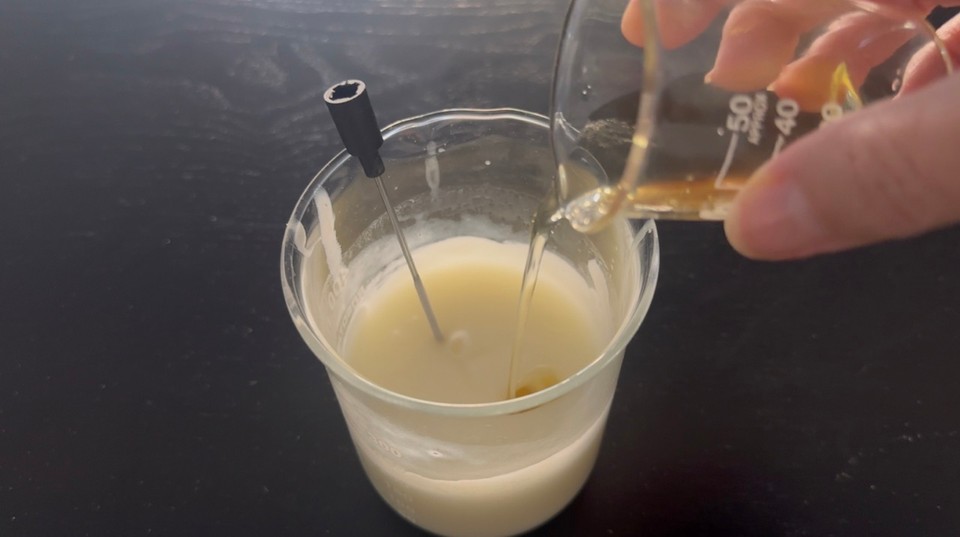
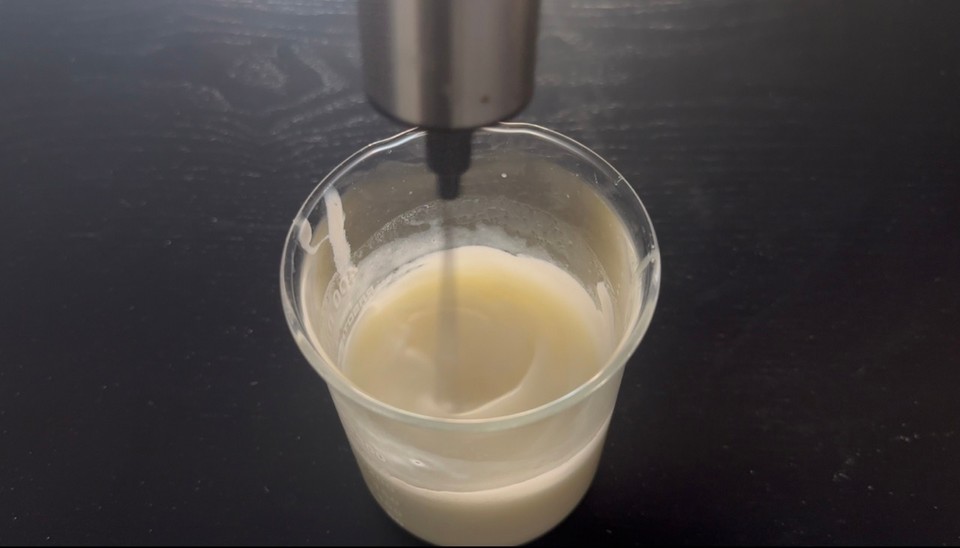
- Check the pH and adjust if necessary. The final pH should be 5.5-6. More about pH adjustments in this post.
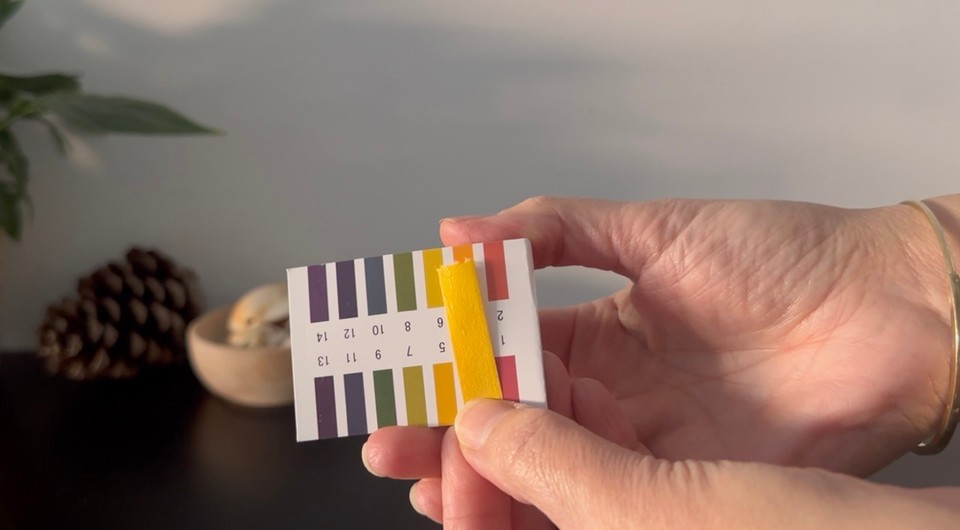
- After 4-6 hours, pour into a tube container or a pump bottle. (Final consistency usually forms after a couple of hours).
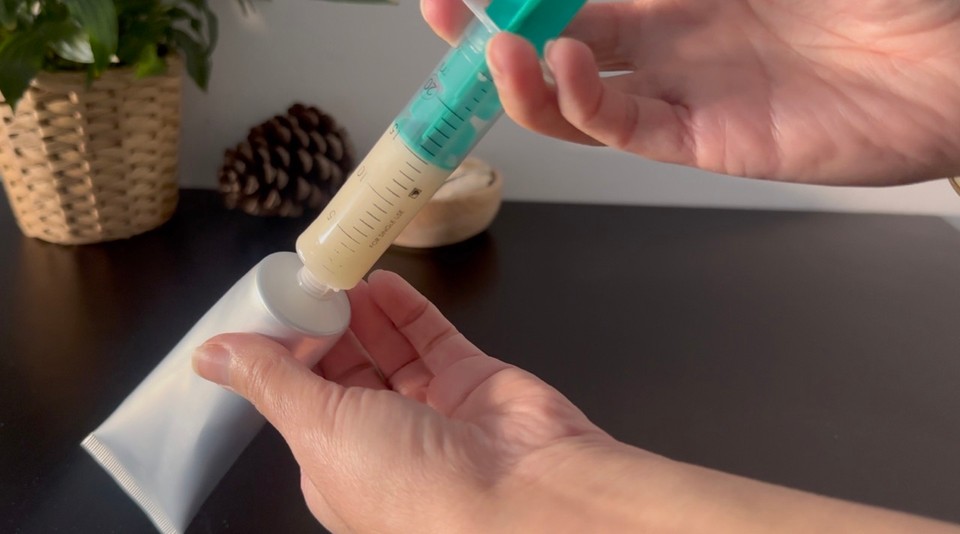
- To improve absorption, you can gently exfoliate the skin 1-2 times a week. Exfoliation helps remove dead skin cells, making the cream more effective (you can find many scrubs and exfoliate formulas on my website). Apply the cream directly to the stretch marks. Use a generous amount to cover the affected area. Use circular motions to massage the cream into the skin. Massaging improves circulation and helps the active ingredients penetrate deeper.
